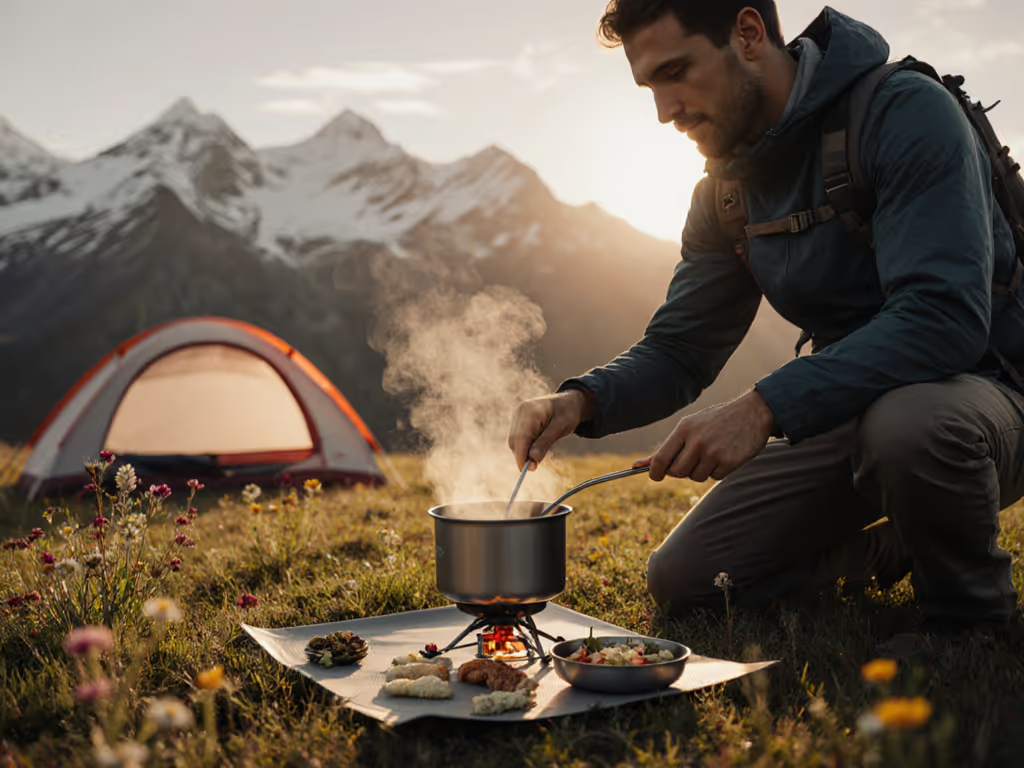
Best Camping Utensils 2022: Expert Picks for Every Camp Cooking Style and Weather Condition
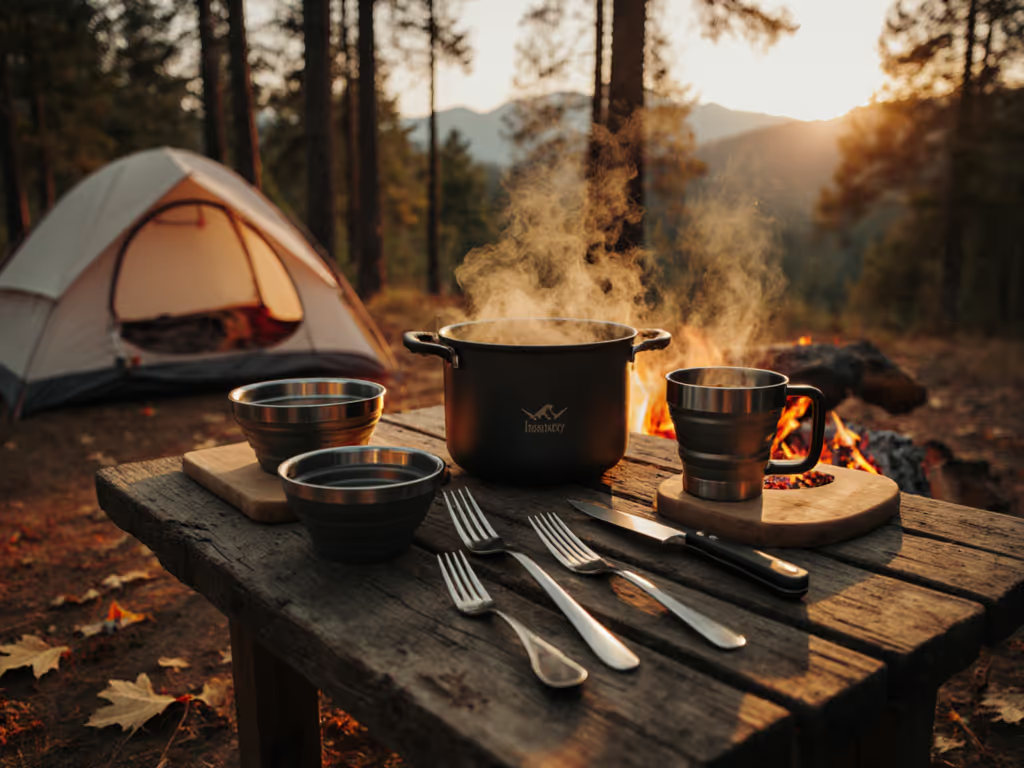
Best Camping Utensils 2022: For Every Camp Cooking Style and Weather Condition
You came here to find the best camping utensils 2022, but you will leave with a plan for better camp meals in any weather. Great food outdoors is not just about the recipe; it is about matching utensils to your stove, fuel, cookware, and the conditions you will face. A long-handle spoon can save your hands in subzero mornings, while a silicone spatula can be the difference between fluffy pancakes and burned batter in the wind. As you read, you will see how stove-focused, field-proven considerations connect each utensil to real-world camp cooking.
Before we jump to the suggested utensil list, consider your terrain, temperature, and group size. Will you be simmering a chili at 7,000 feet, or stirring freeze-dried meals above treeline with icy gusts? The answer changes what works in your hand and over your flame. Throughout this guide, we will show you how the right tools reduce waste, speed up meals, and lower stress, especially when paired with stove and fuel insights from Heatinerary’s Trip-Tuned Stove Lab, which focuses on stoves, fuels, and cookware. If you're still choosing a burner, start with our best camp stove buyer’s guide for wind-proof simmer control and real-world picks.
Why Your Utensils Matter More Than You Think
Utensils are small, but they shape every minute you spend cooking and eating. In cold weather, stiff plastics can crack, and short handles can put your knuckles into boiling steam. At high elevations, simmer control grows tricky, which is where flexible, heat-resistant tools help keep delicate foods moving without scorching. Think of your utensil kit as a lightweight insurance policy: it prevents messes, protects cookware, and safeguards morale when conditions get rough.
Material choice is equally important. Titanium is roughly 40 percent lighter than common stainless steel, and it does not rust. Nylon blends can be gentle on nonstick coatings but may soften near open flames. Food safety matters too: modern, food-grade polymers are typically free from BPA [Bisphenol A], and you can select coatings that avoid PFOA [Perfluorooctanoic Acid] if that aligns with your priorities. With smart picks, you can cook confidently and cleanly without carrying extra weight.
This is where Heatinerary shines. Many campers struggle to connect utensils with stove type, pot shape, fuel volatility, and real weather. Heatinerary’s Trip-Tuned Stove Lab analyzes your route, elevation, season, and wind exposure, then pairs stoves, fuels, and cookware, and provides stove-and-cookware-focused guidance to help you choose utensils that suit the flame pattern and pot geometry you will actually use. The result is faster boils, fewer hot spots, and easier stirring and serving, whether you are soloing in the shoulder season or feeding a family at a coastal campsite.
Best Camping Utensils 2022: By Cooking Style
We organized these suggestions by how you cook, not just what looks cool on a keychain. Each item includes when it shines, what weather it handles, and a practical tip to stretch its value. Ask yourself: which cooking motion do you use most often - stir, scrape, flip, scoop, or serve?
Watch This Helpful Video
To help you better understand best camping utensils 2022, we've included this informative video from TheOutdoorGearReview. It provides valuable insights and visual demonstrations that complement the written content.
-
Long-Handle Titanium Spoon
Best for freeze-dried meals, deep pots, and windy shoulder seasons. The extra reach keeps hands away from steam and frost-nipped pot rims, and titanium will not bend in frozen peanut butter. Pair with tall canister stoves to avoid tipping your pot while stirring. 2. ### Titanium Spork
Ideal for ultralight backpacking where you alternate between noodles and oats. It is a true one-tool solution on minimalist trips, shaving grams without giving up slurp-friendly tines. Works well when your stove has tight pot support, since you can eat directly from the pot. 3. ### High-Heat Silicone Spatula
Choose a scraper spatula rated above 260 degrees Celsius for eggs, pancakes, and sautéed veggies. Silicone protects nonstick coatings and flexes for corner-to-corner coverage. In cold mornings, it stays pliable where nylon can turn brittle. 4. ### Folding Nylon Turner
For car camping and van life, a folding turner flips burgers and quesadillas without hogging space. Nylon plays nicely with coated pans and cleans quickly in limited water. It is also glove-friendly for frosty breakfasts. 5. ### Compact Locking Tongs
Tongs are the multi-tool of camp kitchens, excellent for stirring pasta, plating steaks, or retrieving foil packets. Locking versions pack flat and offer safe reach over tall flames. Choose silicone-tipped models to protect coatings. 6. ### Heat-Resistant Ladle
Soups, stews, and ramen demand a ladle with a pour spout. Look for a lightweight bowl shape that nests inside your pot set. In gusty conditions, a ladle minimizes spills when serving hungry campers in gloves. 7. ### Collapsible Measuring Cup and Spoon Set
Precision matters when fuel is tight; measuring oats, rice, or pancake mix reduces overcooking and waste. Collapsible silicone saves space and resists freezing. Markings should be embossed, not printed, to survive dish duty. 8. ### Compact Chef Knife With Sheath
A 4 to 6 inch blade with a rigid sheath turns camp prep from chore to joy. Choose stainless steel with a grippy handle that works when wet. A small cutting board and a blade guard keep things sanitary and safe in the food bag. 9. ### Pot Gripper or Pincer
For metal mugs and lid-lifter pots, a pot gripper prevents spills and saves fingertips. Many nesting cook sets include one; carry a backup if you are snow camping. Aluminum grippers are light and plenty strong for one-liter pots. 10. ### Chopsticks (Reusables)
Great for ramen, stir-fries, and hygienic snacking, chopsticks reduce cross-contamination. Wood or titanium options weigh little and resist heat. They double as wind-testers when you are judging simmer stability at exposed sites. 11. ### Micro-Serrated Utility Knife
When bread is on the menu, a micro-serrated blade slices tomatoes and rolls without crushing. It is safer for group trips where not everyone is a knife pro. Keep it in a bright sheath so it does not vanish in dusk shadows. 12. ### Mini Whisk
From hot cocoa to pancake batter, a mini whisk aerates quickly and wipes clean. It is tiny, light, and surprisingly useful for emulsifying dressings. For cold-weather brunches, it speeds up thick mixes that stiffen in the chill.
| Utensil | Typical Weight | Best Use | Weather Strength | Why It Wins |
|---|---|---|---|---|
| Long-Handle Titanium Spoon | 15 to 22 grams | Deep pots, freeze-dried meals | Cold, windy | Reach plus rigidity keeps hands safe and stirring steady |
| Titanium Spork | 12 to 20 grams | Ultralight meals, one-tool eating | All-season | Versatility with minimal mass |
| High-Heat Silicone Spatula | 28 to 45 grams | Scrambled eggs, pancakes, sauté | Cold mornings, variable winds | Heat-safe flex preserves coatings and controls edges |
| Locking Tongs | 60 to 100 grams | Grilling, plating, pasta | Wind, group cooking | Safe reach and one-handed control |
| Ladle with Pour Spout | 40 to 70 grams | Soups and stews | Cold evenings | Spill-resistant serving for hearty meals |
| Compact Chef Knife | 80 to 150 grams | All prep tasks | All-season | Efficiency and safety with a proper sheath |
Weather, Altitude, and Materials: What Actually Changes Out There
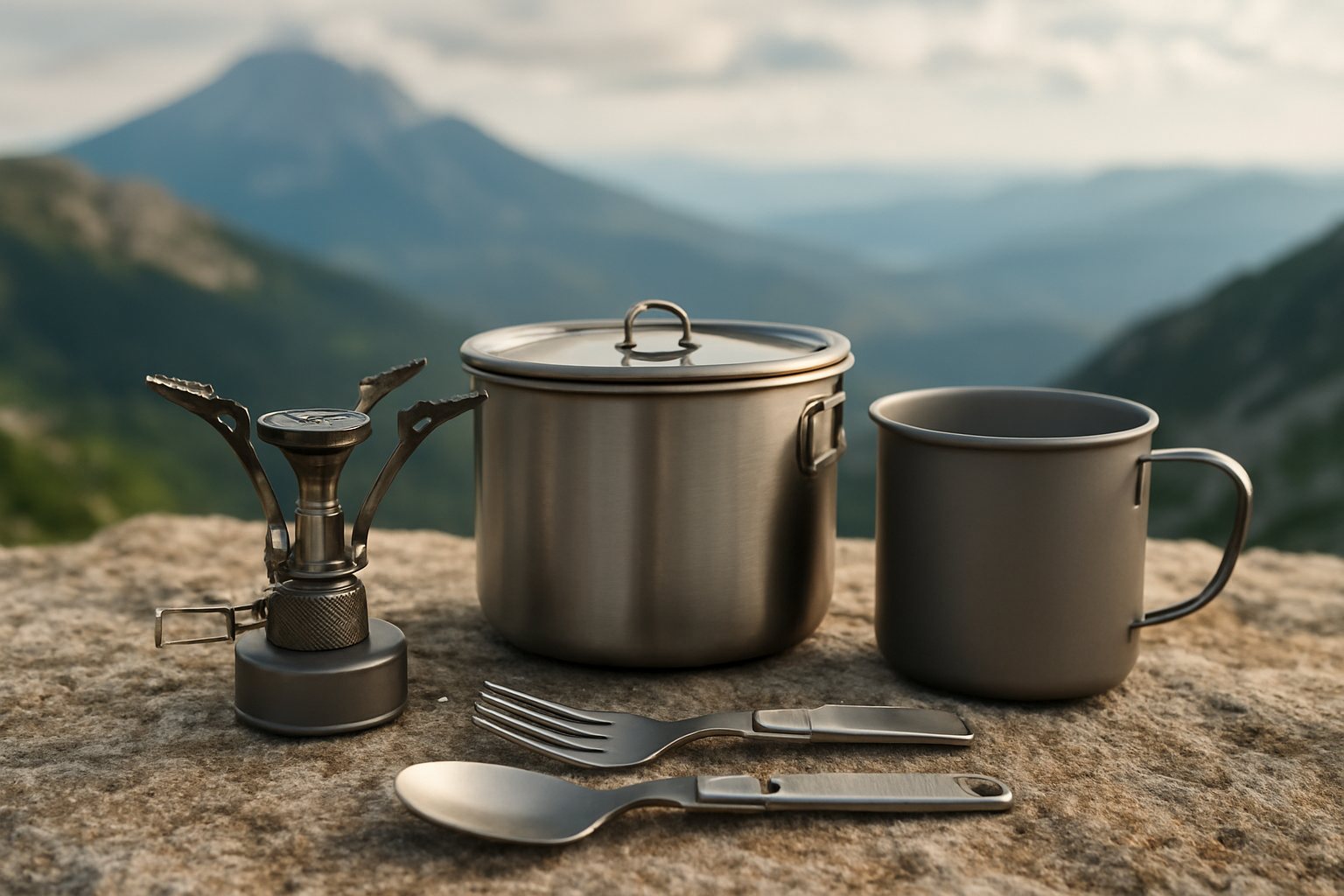
Cold saps flexibility from many plastics and glazes pans with tiny oil-resistant films, making sticking more likely. Wind steals heat and drives flame up the pot sides, demanding more stirring reach and better scraping to avoid scorched rims. At higher elevations, boiling points drop and simmer control becomes delicate, so you need utensils that let you micro-adjust food contact, especially with finicky sauces and eggs.
Materials respond differently across these variables. Titanium excels in strength-to-weight but can feel sharp against coated surfaces if edges are unfinished. Stainless steel is durable and stable in heat yet heavy for long carries. High-heat silicone offers buttery scraping without marring nonstick coatings and stays springy below freezing. When you blend materials - for example, titanium handle with silicone head - you get the best of both worlds for shoulder-season trips.
| Material | Heat Tolerance | Cold Performance | Best Pairing | Watch-Out |
|---|---|---|---|---|
| Titanium | Excellent; resists deformation | Excellent; does not embrittle | Boil-heavy menus, deep pots | Unfinished edges can scratch coatings |
| Stainless Steel | Very good; stable at high heat | Very good; slight weight penalty | Car camping, heavy-duty stirring | Heavier in the pack |
| High-Heat Silicone | Very good; 260 degrees Celsius plus | Good; remains flexible | Nonstick pans, delicate foods | Direct flame can scorch |
| Nylon/Polymer | Good; varies by formulation | Fair to good; may stiffen in cold | Budget kits, general use | Keep away from flame tips |
| Bamboo/Wood | Good; gentle on coatings | Good; can swell if soaked | Quiet stirring, family use | Needs drying to avoid odors |
If you often camp where dawn temperatures flirt with freezing and winds gust above 20 miles per hour, a titanium long-handle spoon and a silicone spatula form a reliable core. For cold dawns with gas canisters, see our canister stoves in cold weather strategies to keep performance up. For warmer, calmer trips, nylon blends can cut cost without big compromises. Heatinerary’s testing notes show that pairing silicone-sided tools with wide, low-flame burners reduces sticking and fuel use, especially on simmer-heavy breakfasts.
Fuel, Stove, and Utensil Synergy: How to Cook Faster With Fewer Headaches
Not all flames behave the same. Upright canister stoves concentrate heat at the center, boosting boil speed but increasing hot spots. Liquid-fuel stoves with broad burners spread heat better for pan work, yet they demand patient priming. Alcohol and solid-fuel systems burn gently, pushing you toward simpler boil-and-soak recipes. Your utensils should complement the flame you carry.
Heatinerary’s Trip-Tuned Stove Lab analyzes these variables with your route and weather. Heading to a windy alpine pass in March? The Lab might pair a regulated canister stove and windscreen-friendly cookware, and - based on those stove-and-cookware choices - offer guidance on utensil types that work well, such as a long-handle spoon for safe reach, tongs for pot-lid handling, and a silicone spatula for tight simmer control. Expecting subzero lows? The Lab’s comparison of stove fuels for subzero performance often shifts recommendations toward liquid-fuel options; Heatinerary's guidance then highlights glove-friendly serving tools suitable for heavier, insulated pots.
| Fuel Type | Flame Behavior | Best Cookware | Utensil Recommendations | Weather Fit |
|---|---|---|---|---|
| Upright Canister | Fast, center-hot | Taller pots, heat exchangers | Long spoon, silicone spatula, pot gripper | 3-season, moderate wind |
| Remote Canister (Inverted) | Stable, better in cold | Wider pots and pans | Tongs, turner, ladle | Cold shoulder seasons |
| Liquid Fuel (White gas) | Broad, powerful | Skillets, group pots | Turner, tongs, chef knife | Winter, high altitude |
| Alcohol | Gentle, steady | Small pots, cozy cooking | Long spoon, measuring set | Ultralight, mild weather |
| Solid Fuel | Low, wind-sensitive | Compact pots | Long spoon, pot gripper | Emergency, fair weather |
Small utensil tweaks deliver outsized results. A mini whisk shortens cocoa time on alcohol stoves. A locking tong turns into a safe lid-lifter when wind shifts and your flame climbs the pot wall. A measuring spoon prevents fuel-wasting overpours with rice that otherwise needs extra boil time. These are the kinds of real-world optimizations Heatinerary’s comprehensive camping stove reviews and guides bring to life with clear, route-specific reasoning.
Build Your Kit: Four Ready-to-Pack Loadouts
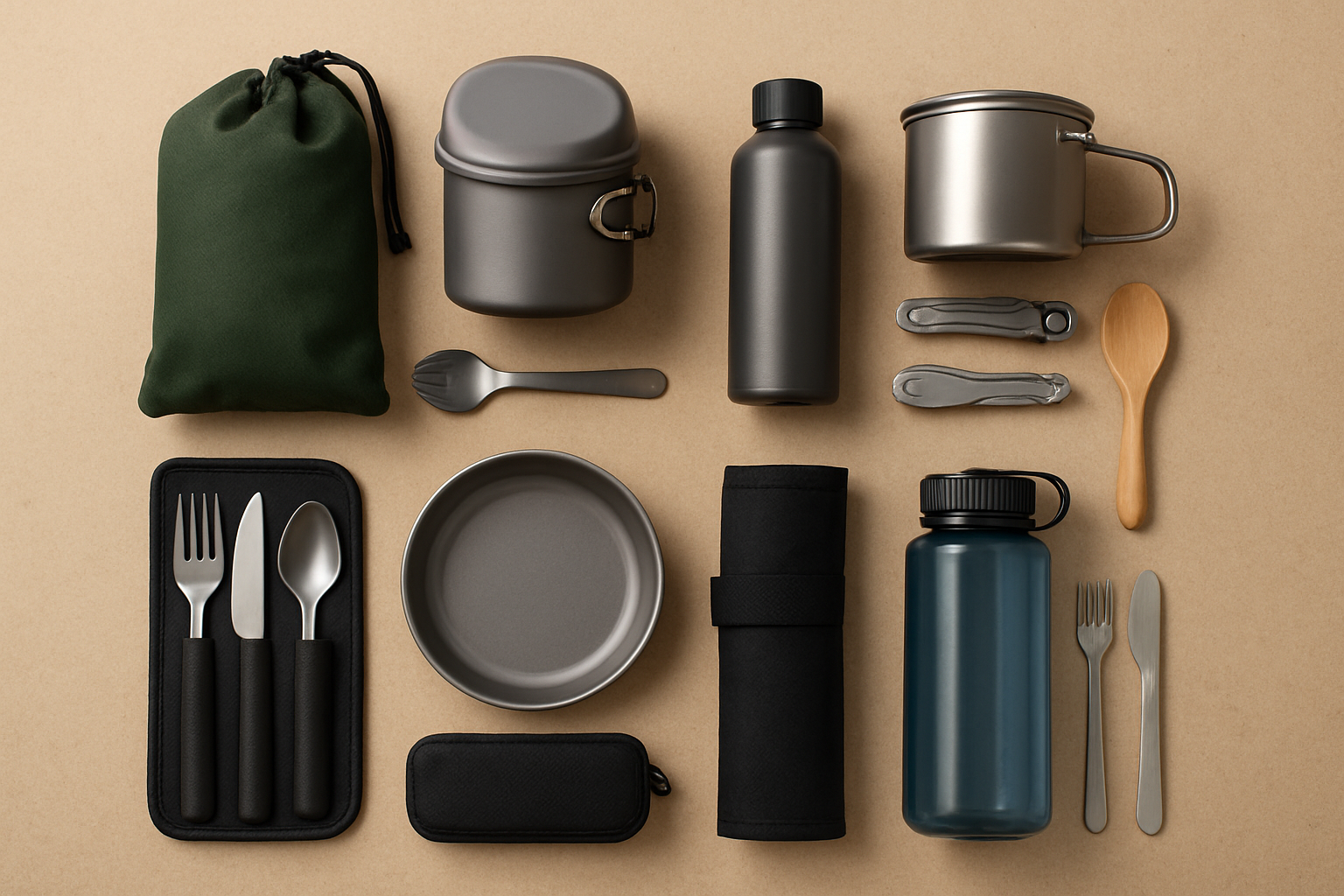
Rather than buying piecemeal, assemble a kit matched to your trip. Below are four proven loadouts that balance weight, durability, and cooking performance in the environments they are designed for. Use them as templates, then swap in personal favorites.
1) Ultralight Solo: 3-Season Fastpack
- Long-handle titanium spoon
- Titanium spork (backup and for noodles)
- Collapsible measuring spoon (1 tablespoon and 1 teaspoon)
- Pot gripper if your mug lacks a handle
Why it works: You eat from the pot, stir often to manage hot centers, and measure to conserve fuel. Titanium stays dependable during chilly dawn starts and does not absorb flavors.
2) Weekend Car Camp: Two-Person Comfort
- High-heat silicone spatula and folding nylon turner
- Locking tongs
- Compact chef knife with sheath and small cutting board
- Ladle for soups and stews
Why it works: Burner control is easier on broad car-camping stoves, so you can flip and sauté with confidence. Silicone protects nonstick pans and speeds cleanup, saving water.
3) Snow Kitchen: Group Winter Base
- Locking tongs and heat-resistant ladle
- Long-handle titanium spoon
- Chef knife plus micro-serrated utility knife
- Measuring set for fuel-efficient recipes
Why it works: Winter meals lean on soups and high-calorie stews. Tongs and ladle manage heavy pots in gloves, and long handles keep hands out of steam and spindrift.
4) Family Basecamp: Variety and Volume
- Two silicone spatulas (one scraper, one turner)
- Locking tongs
- Chopsticks for snacks and noodles
- Chef knife with bright sheath and a larger cutting board
Why it works: Parallel cooking reduces hunger meltdowns. Duplicate spatulas mean eggs and pancakes can happen at the same time, while chopsticks keep small hands engaged safely.
Smart Buying: Features That Matter More Than Marketing
Look past color and fancy names. Inspect edge finishing on metal utensils; smooth edges protect your cookware and your mouth. Check temperature ratings stamped on silicone and nylon tools, not just printed on packaging. Test handle grip with damp fingers - if it slips in the store, it will slip in a drizzle at dinner.
Packability matters too. Folding tools should lock positively and not pinch. Nest utensils inside your pot set to eliminate rattles, and choose ladles and tongs that flatten. Avoid coatings that peel; if you prefer nonstick cookware, look for pans that avoid PFOA [Perfluorooctanoic Acid] and pair them with silicone or wood tools to extend surface life.
| Feature | Why It Matters | Quick Test | Pass/Fail Clues |
|---|---|---|---|
| Edge Finishing | Protects coatings and lips | Drag across a paper napkin | Snags indicate rough edges; smooth is good |
| Heat Rating | Prevents warping and off-flavors | Check embossed temperature range | Missing or printed-only ratings are suspect |
| Grip Texture | Control with wet or gloved hands | Twist with damp fingers | Slippery or hard edges reduce safety |
| Packability | Fits inside pots, reduces noise | Trial pack in your cookware | Rattling or protrusions waste space |
If you are unsure which combination fits your stove and trip, Heatinerary can help. The Trip-Tuned Stove Lab cross-references your pot diameters, burner spread, expected wind, and target recipes to build stove-and-cookware recommendations and to provide guidance on choosing utensils that will work with that setup. It is like having a camp cook and gear tech on call, minus the extra pack weight.
Care, Hygiene, and Safety in the Backcountry
Clean tools cook better and keep you healthy. In the field, wipe utensils with a damp cloth right after use, then follow with hot water if available. For grease-heavy meals, sprinkle a little sand or coffee grounds on your spatula to lift residue without harsh scrubbing, then rinse far from water sources to protect streams.
Sanitation is simple if you plan ahead. Pack a small dropper of biodegradable soap and a scrub pad. Color-code cutting and serving tools to avoid cross-contamination between raw proteins and ready-to-eat foods. Dry everything fully; trapped moisture leads to odors and can stiffen polymer tools on cold nights. Review our camp stove safety guide for ventilation and placement basics that keep meals safe.
Finally, mind food safety and coatings. Choose food-contact tools labeled free from BPA [Bisphenol A], and treat nonstick pans gently to prevent flakes. If you prefer bare metal cookware, your utensils can be tougher, but keep a silicone piece for sticky tasks. Store blades in sheaths and keep them out of the communal grab bag to protect hands during evening cleanup.
Pulling this all together, the best camping utensils 2022 are not a random assortment - they are a system. When your tools match your stove, fuel, pot shape, and weather, meals cook faster, taste better, and leave less mess. Heatinerary’s comprehensive camping stove reviews and guides, plus the Trip-Tuned Stove Lab, make matching stoves, fuels, and cookware to your route easy, and provide practical guidance on choosing compatible utensils for any season.
Imagine opening your kit at dusk and knowing every stir, flip, and scoop will work the first time. In the next 12 months, more campers will pair utensils with precise stove and fuel choices the way climbers match shoes to routes. What will you change in your kitchen to make your very next meal outside easier, safer, and more delicious?
Additional Resources
Explore these authoritative resources to dive deeper into best camping utensils 2022.
- The Best Camping Utensils of 2024, Tested and Reviewed | Fie
- Best Camping Utensils of 2025 - Outdoor Life
Upgrade Your Camp Kitchen with Heatinerary
Heatinerary’s Trip-Tuned Stove Lab provides tailored recommendations for stoves, fuels, and cookware based on route, season, and weather, ensuring safe and efficient cooking anywhere for campers, backpackers, and outdoor enthusiasts.
Related Articles

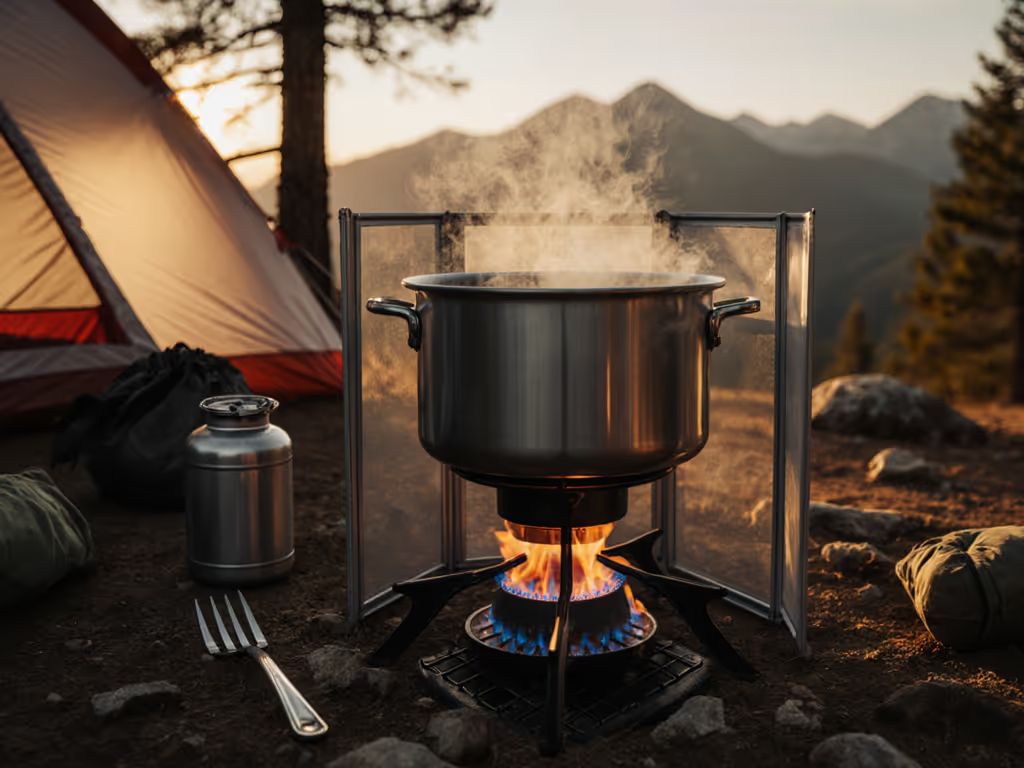
Essential Windscreen Guide for Camping Stove Efficiency
Choose and set up the right windscreen to cut boil times, save fuel, and cook safely in windy conditions. Includes precise guidelines by stove type, recommended materials and clearances, and a practical checklist for reliable camp meals.
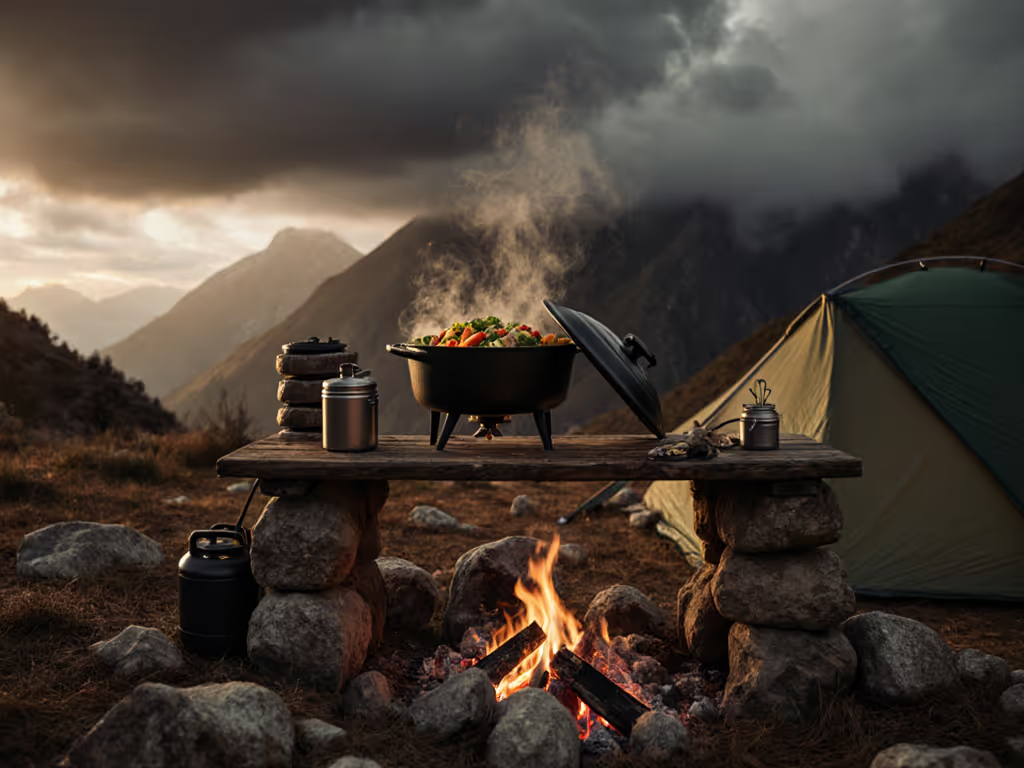
Gourmet Camping Meals: Weatherproof One-Pot Recipes
Weatherproof the camp kitchen with stable, wind-managed stove setups, smart pre-prep, and off-cycle simmer control to make one-pot cooking fast, safe, and fuel-efficient. Get flexible menu swaps for mixed diets and low-water cleanup strategies that keep mealtime smooth in any conditions.
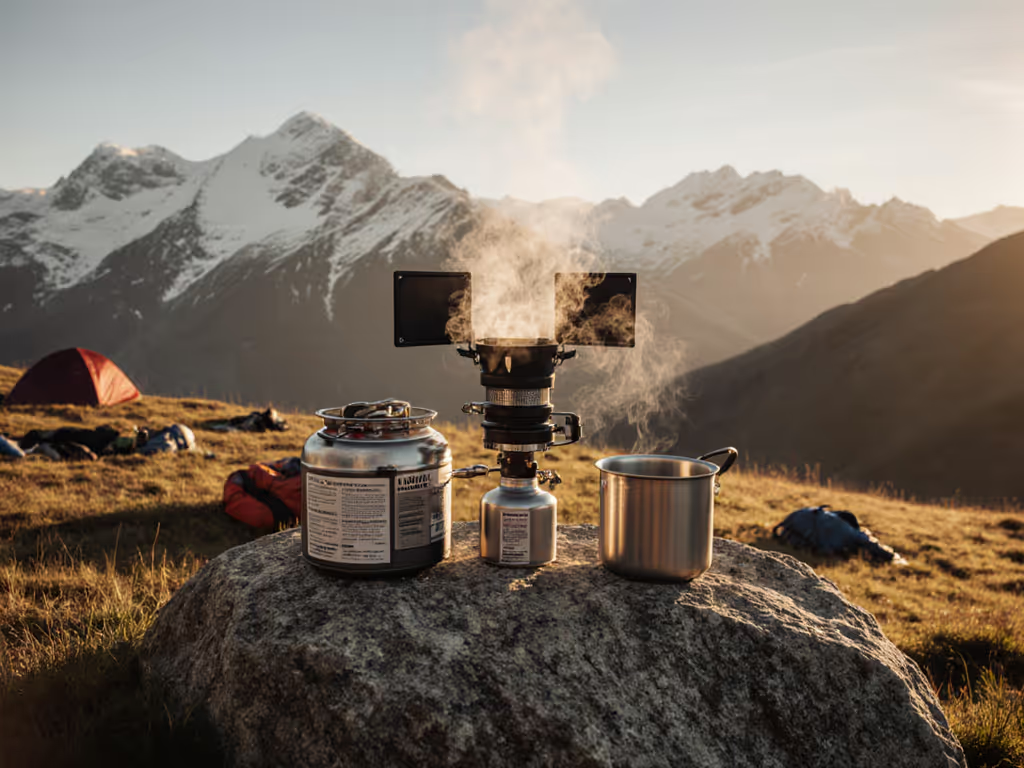
Camp Cooking Stove System: Modular Kitchen Blueprint
Design a modular, serviceable camp stove system for real wind and cold - use field data to choose stoves, a simple fuel formula for altitude and wind, standardized fittings with torque specs, and strict safety and storage practices. Cut setup time with labeled spares and secure every bottle so hot meals happen when conditions turn rough.
